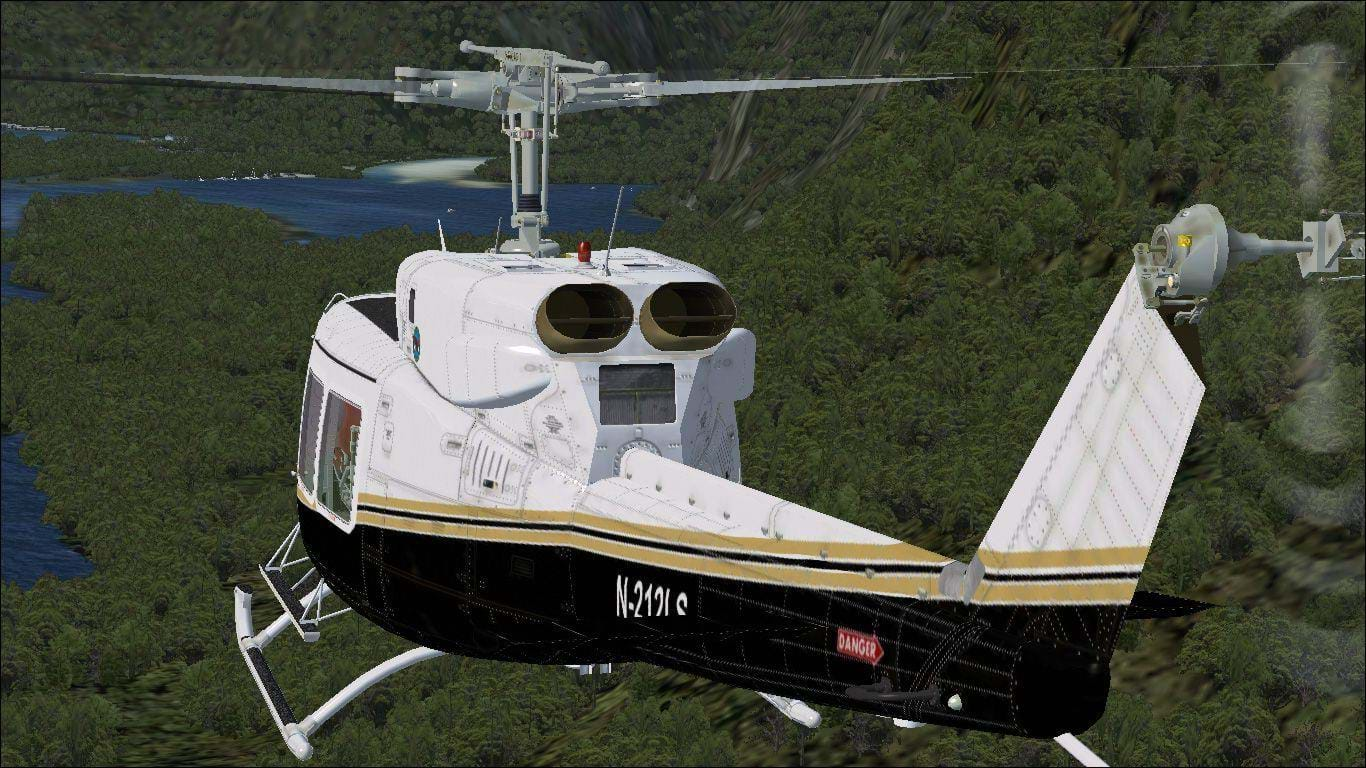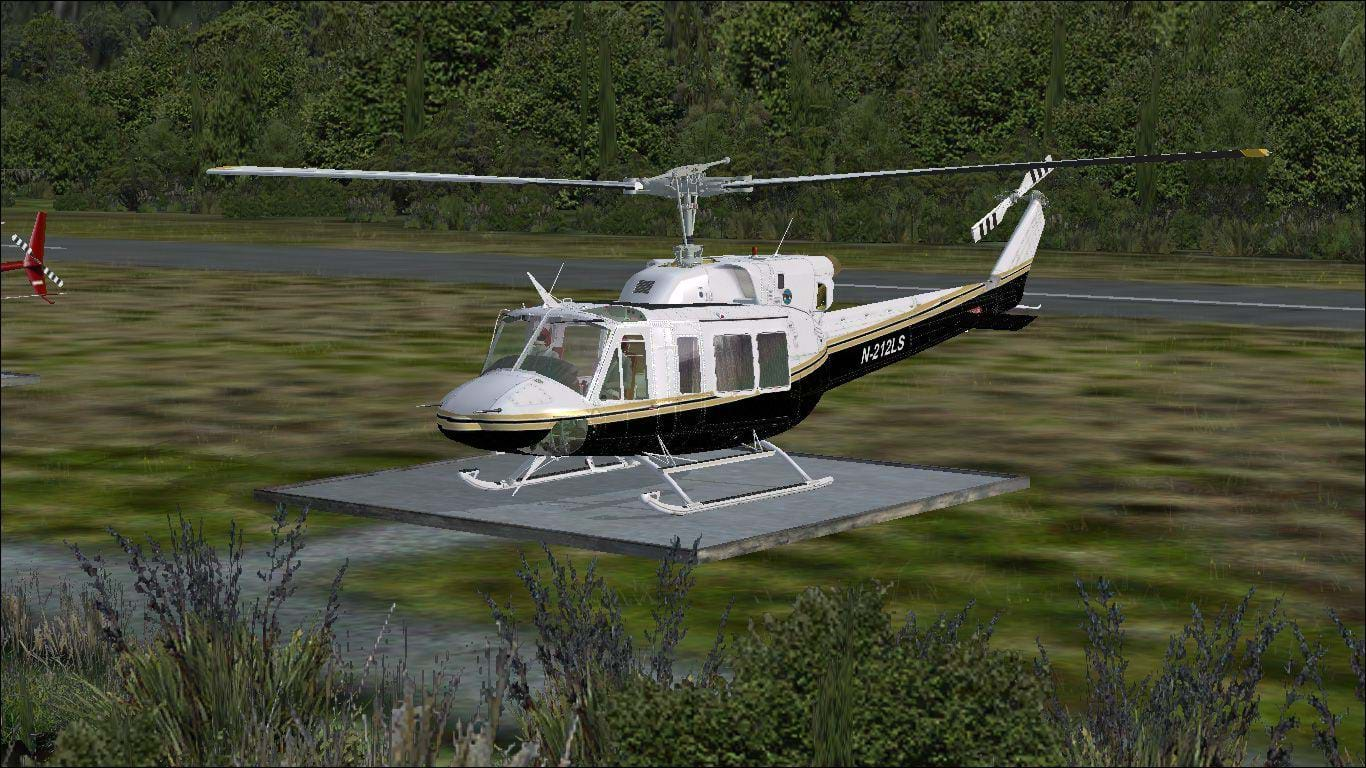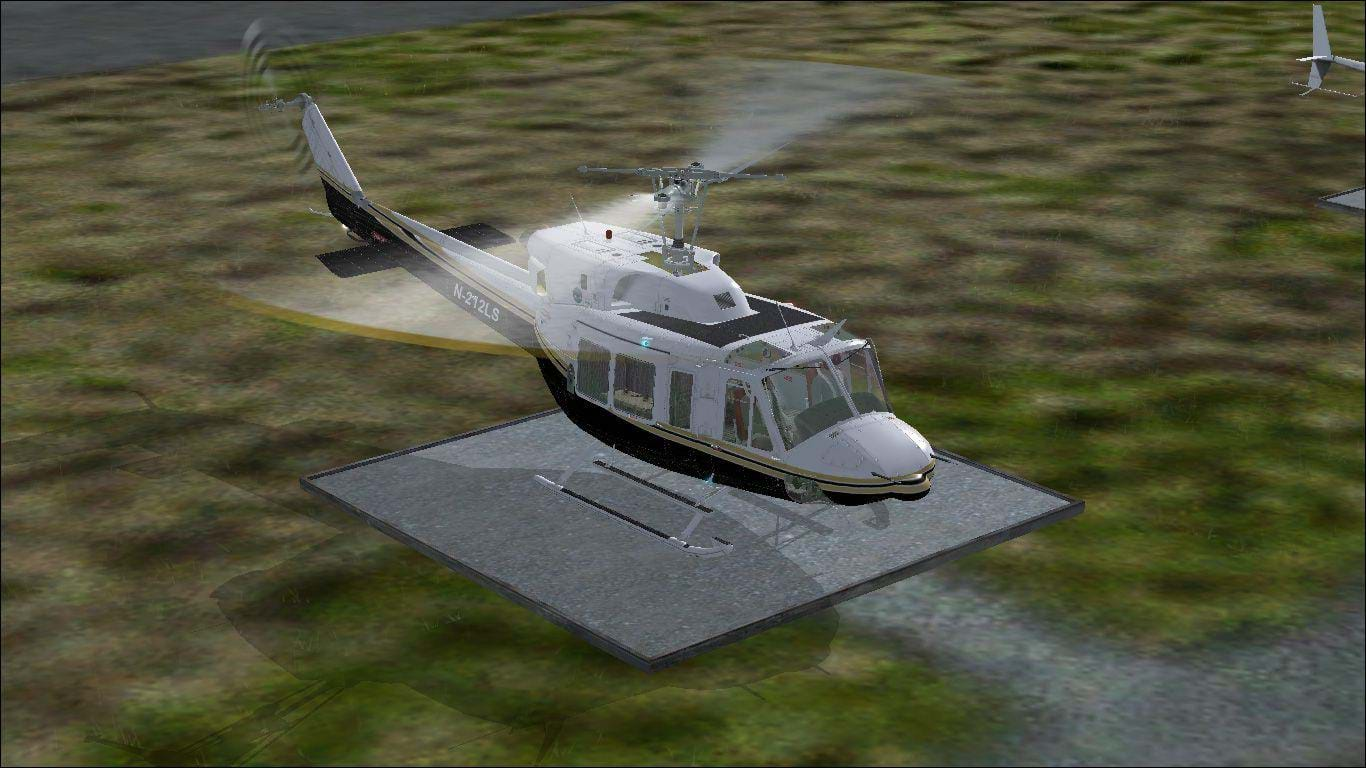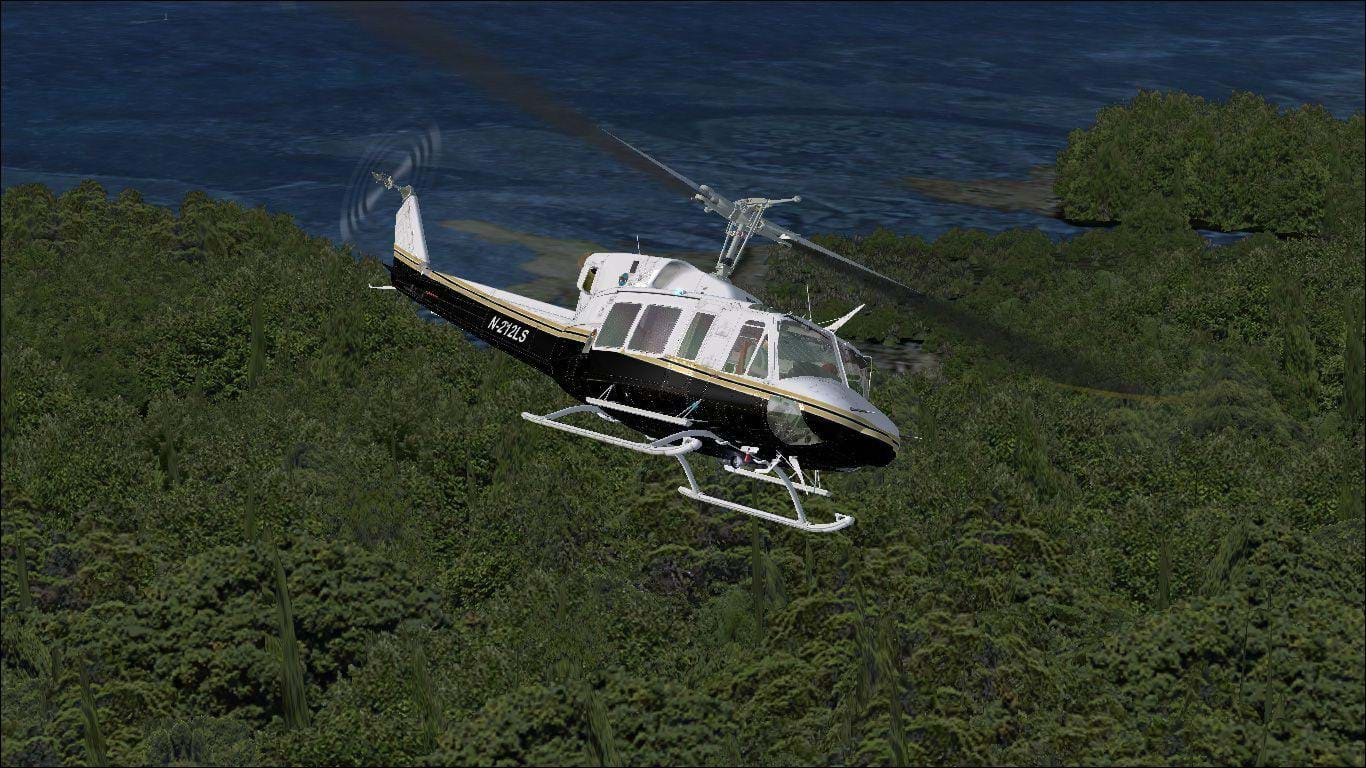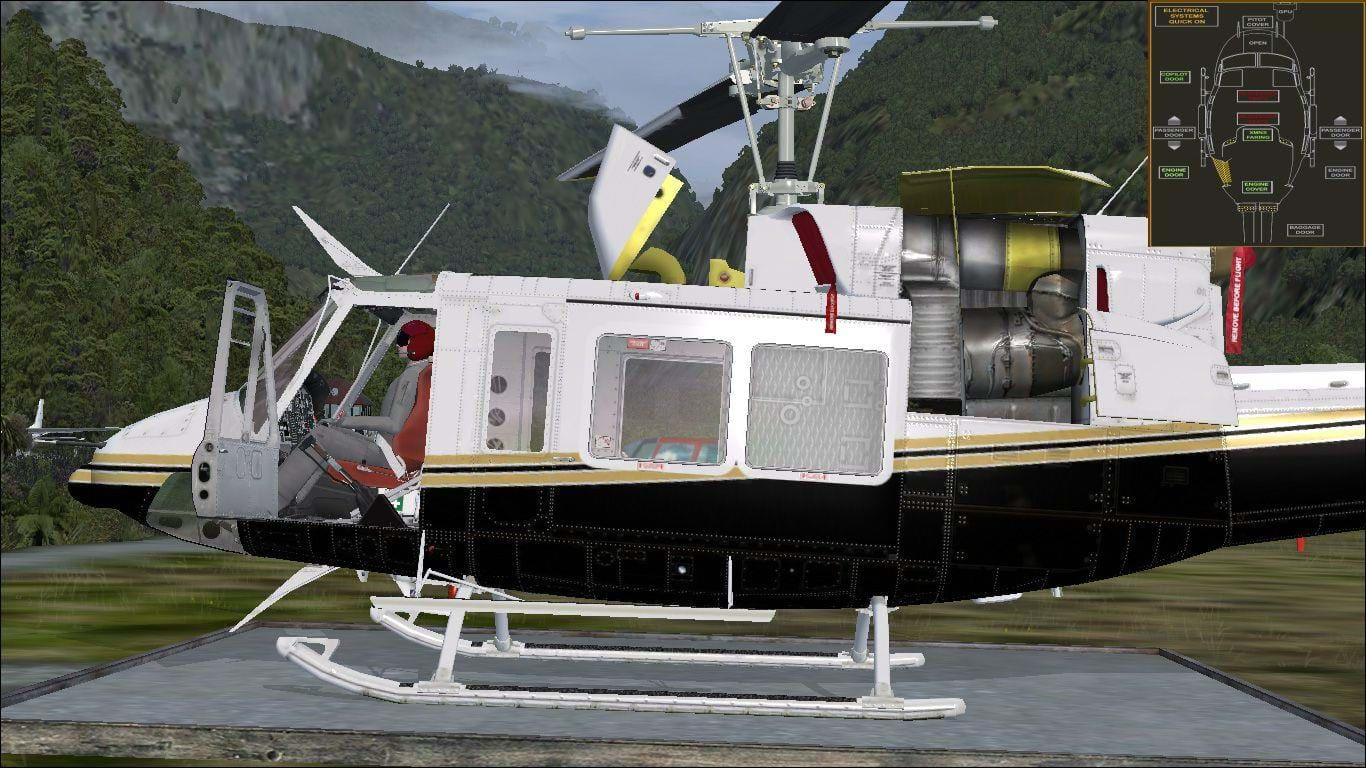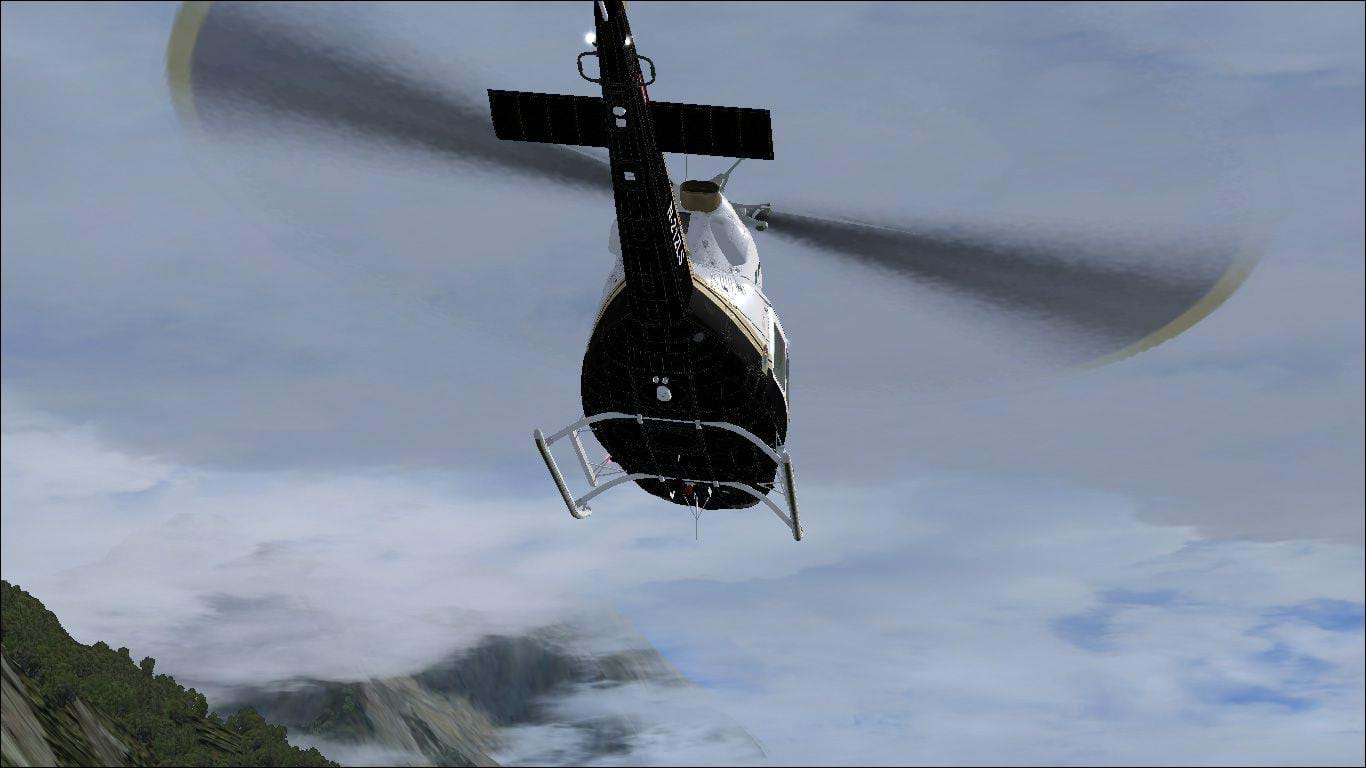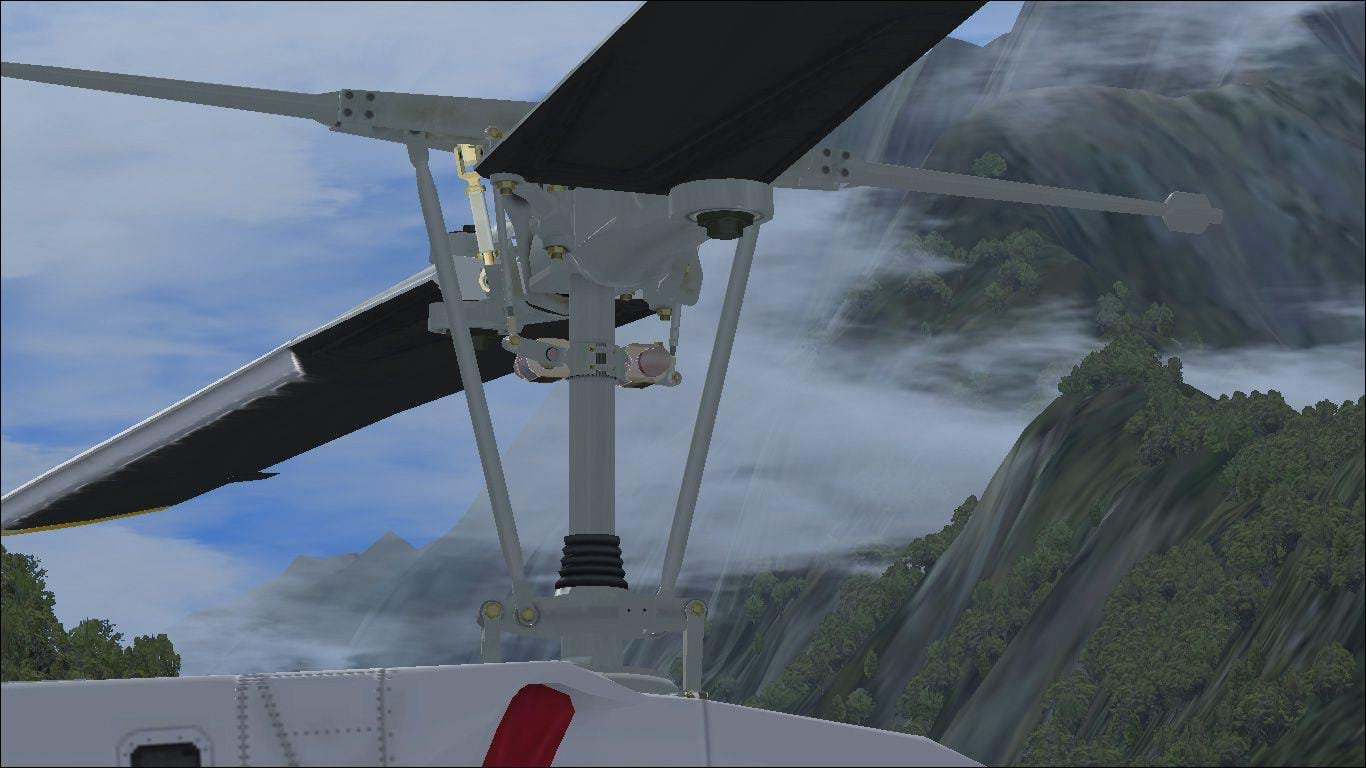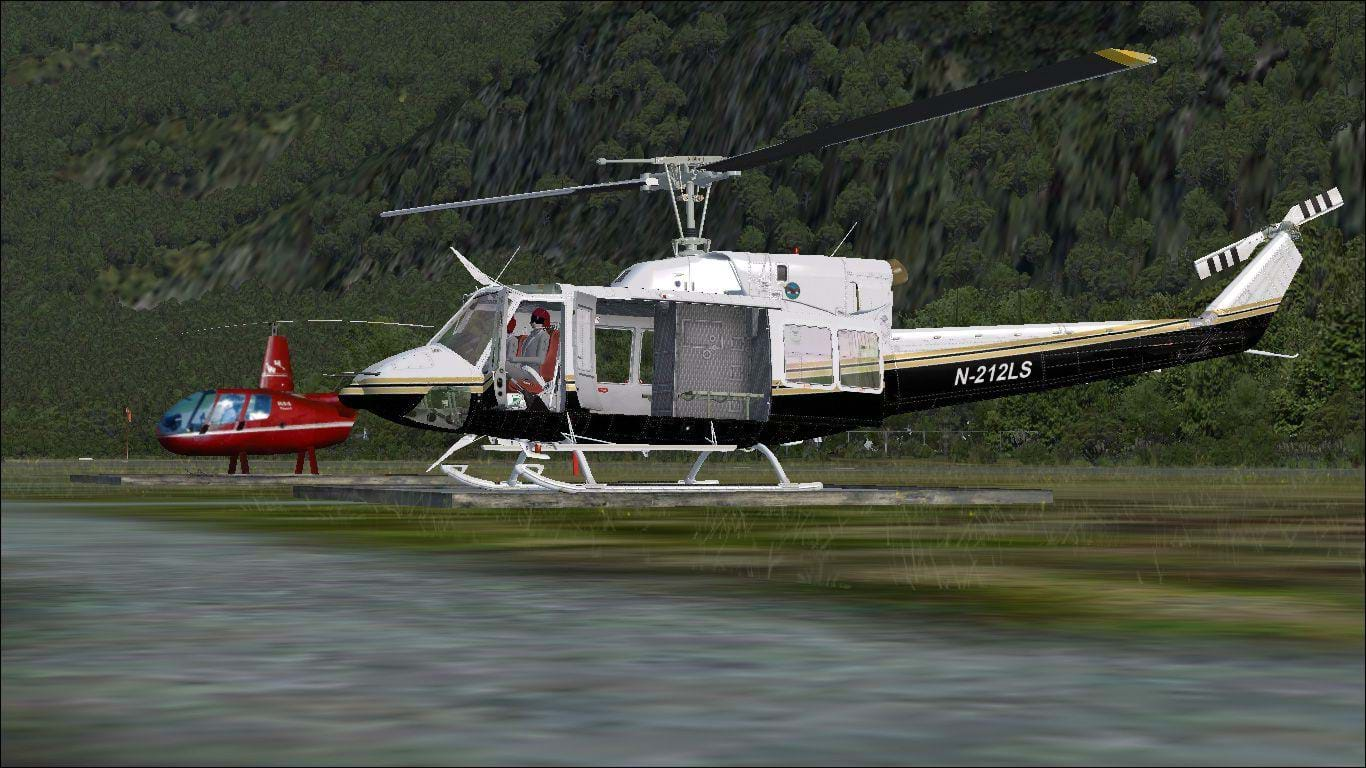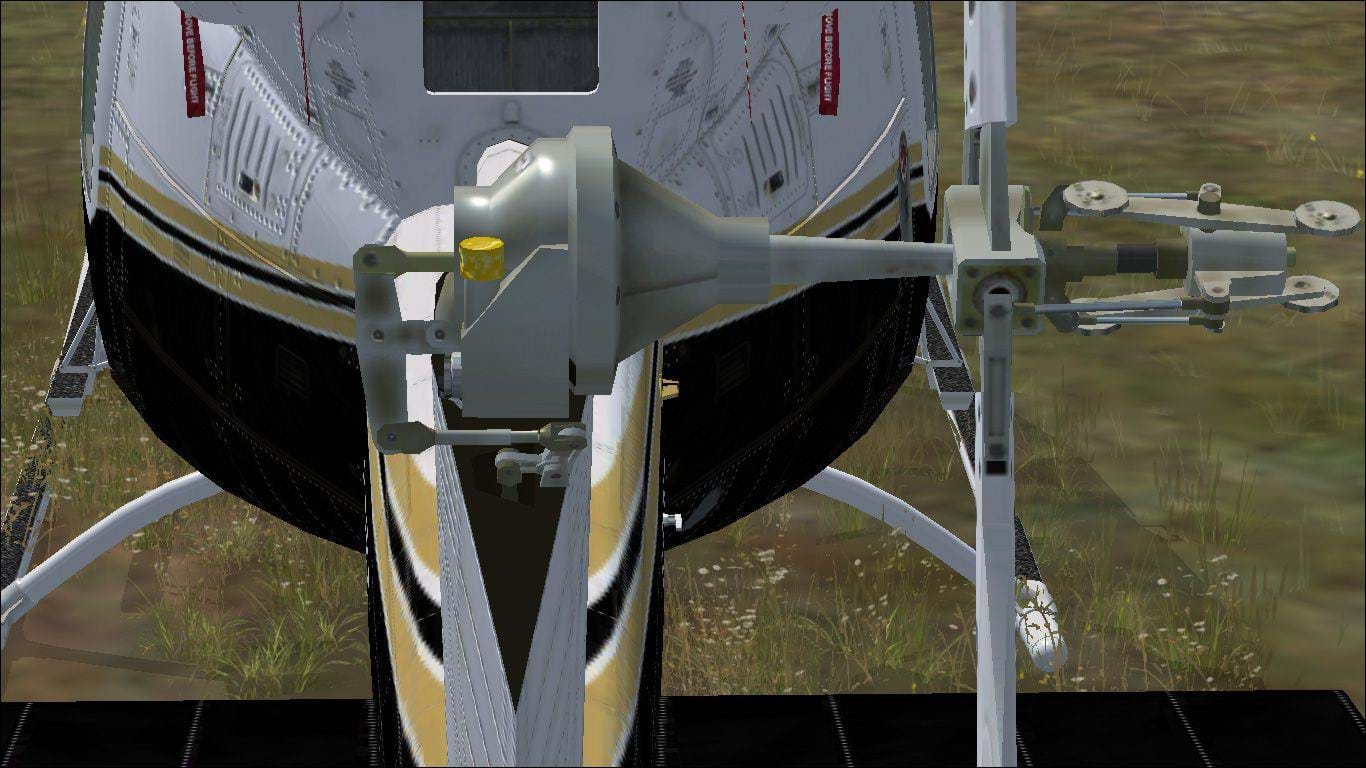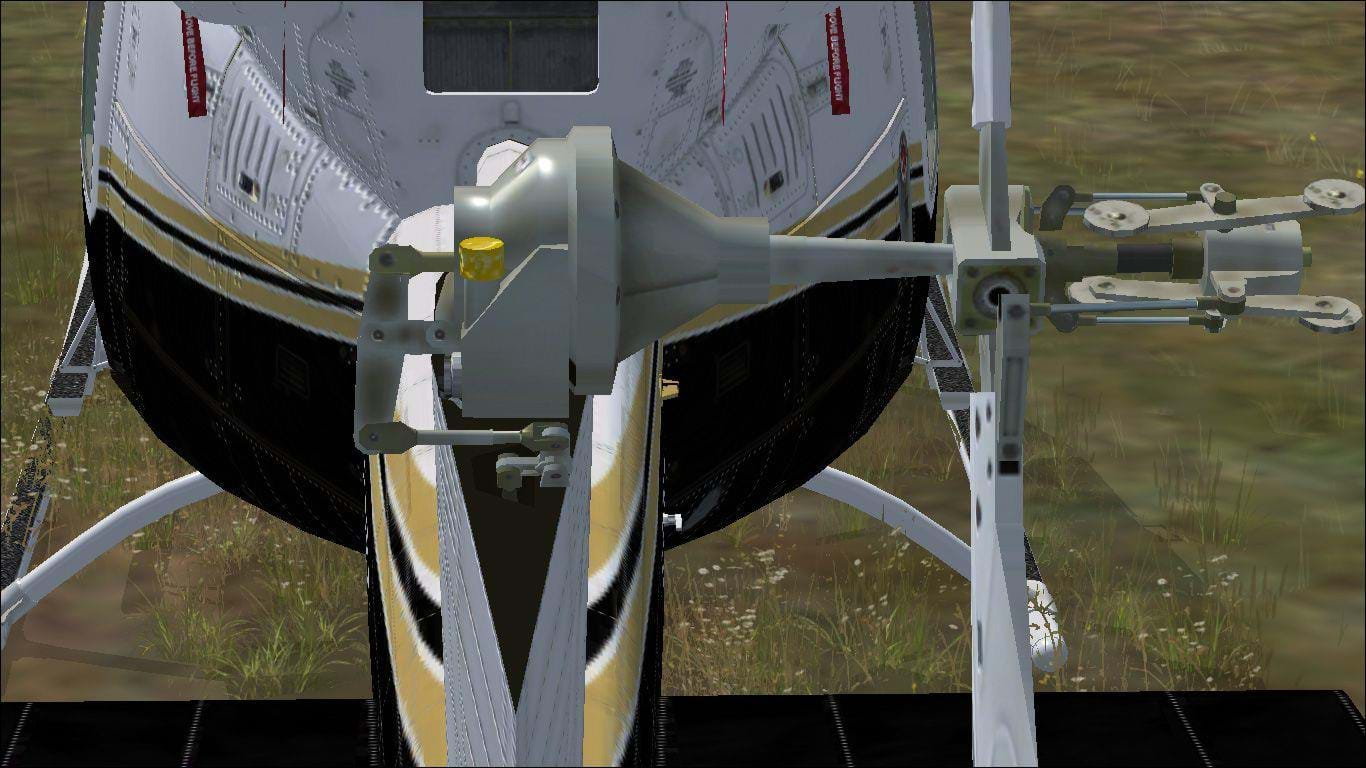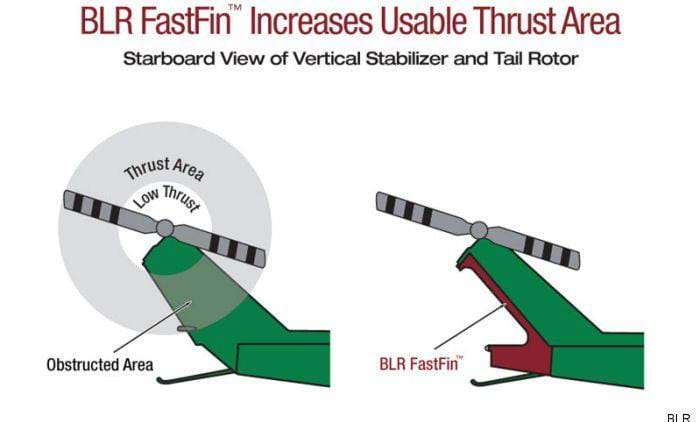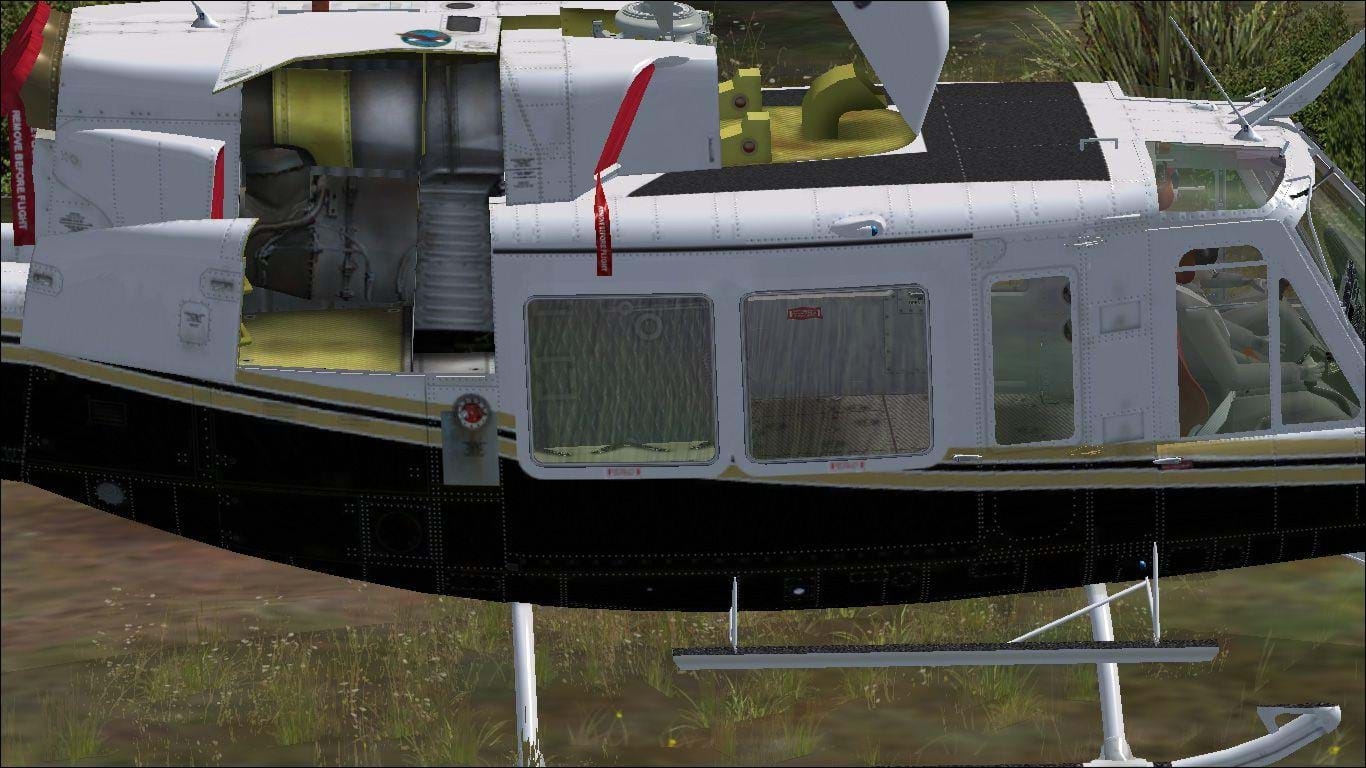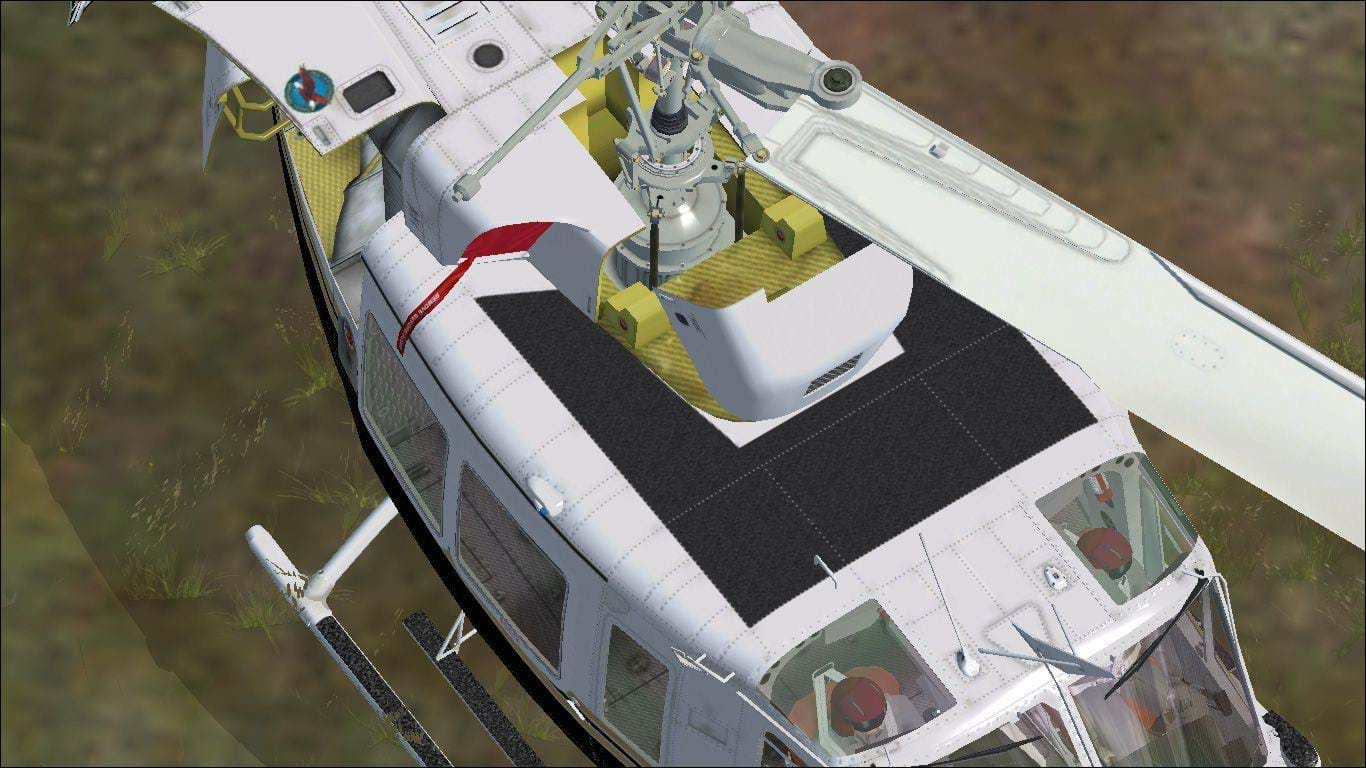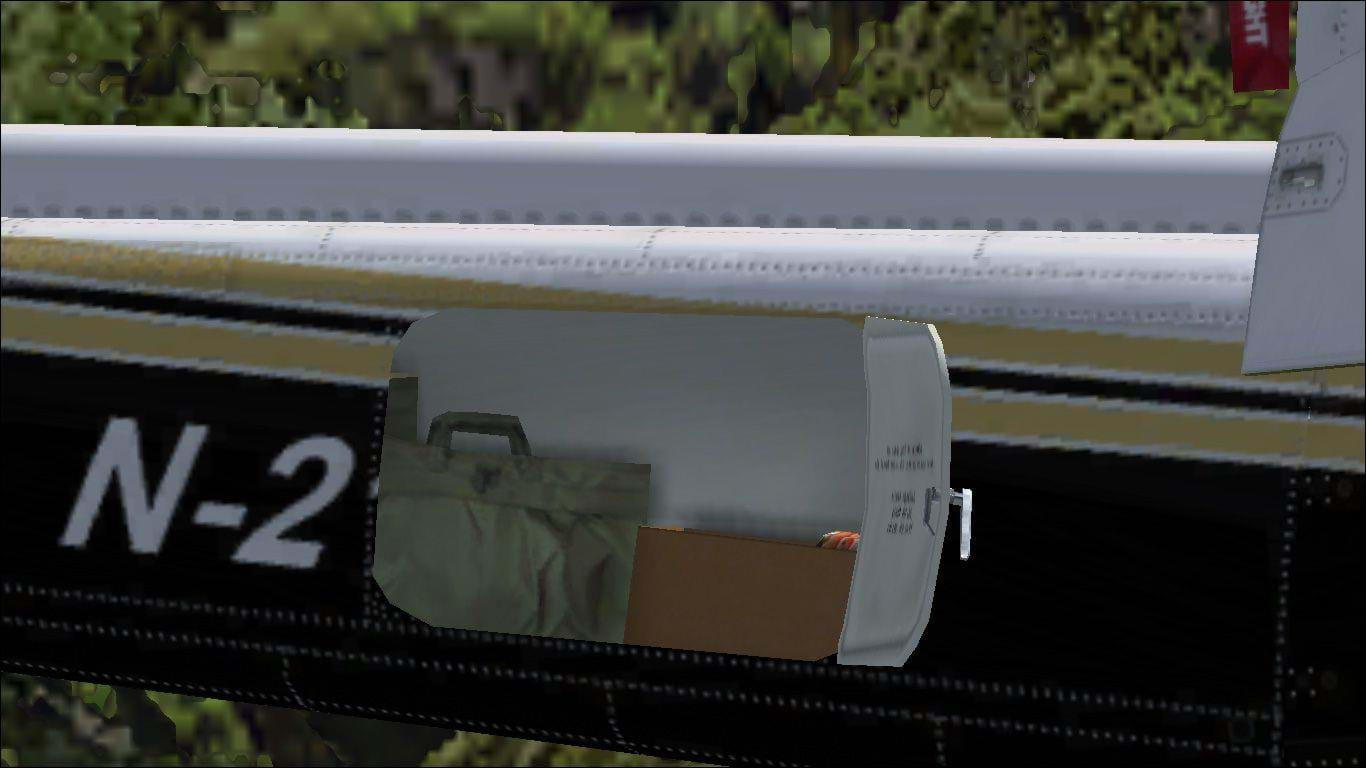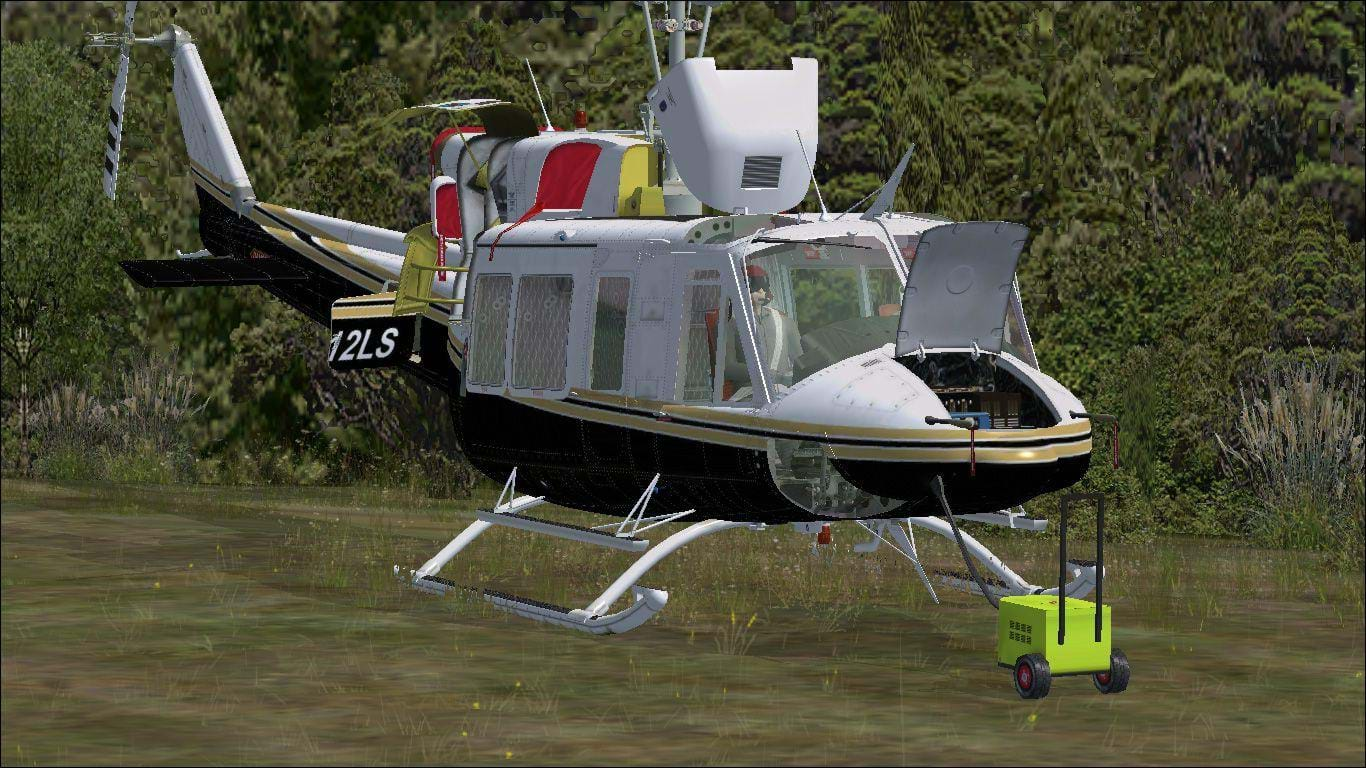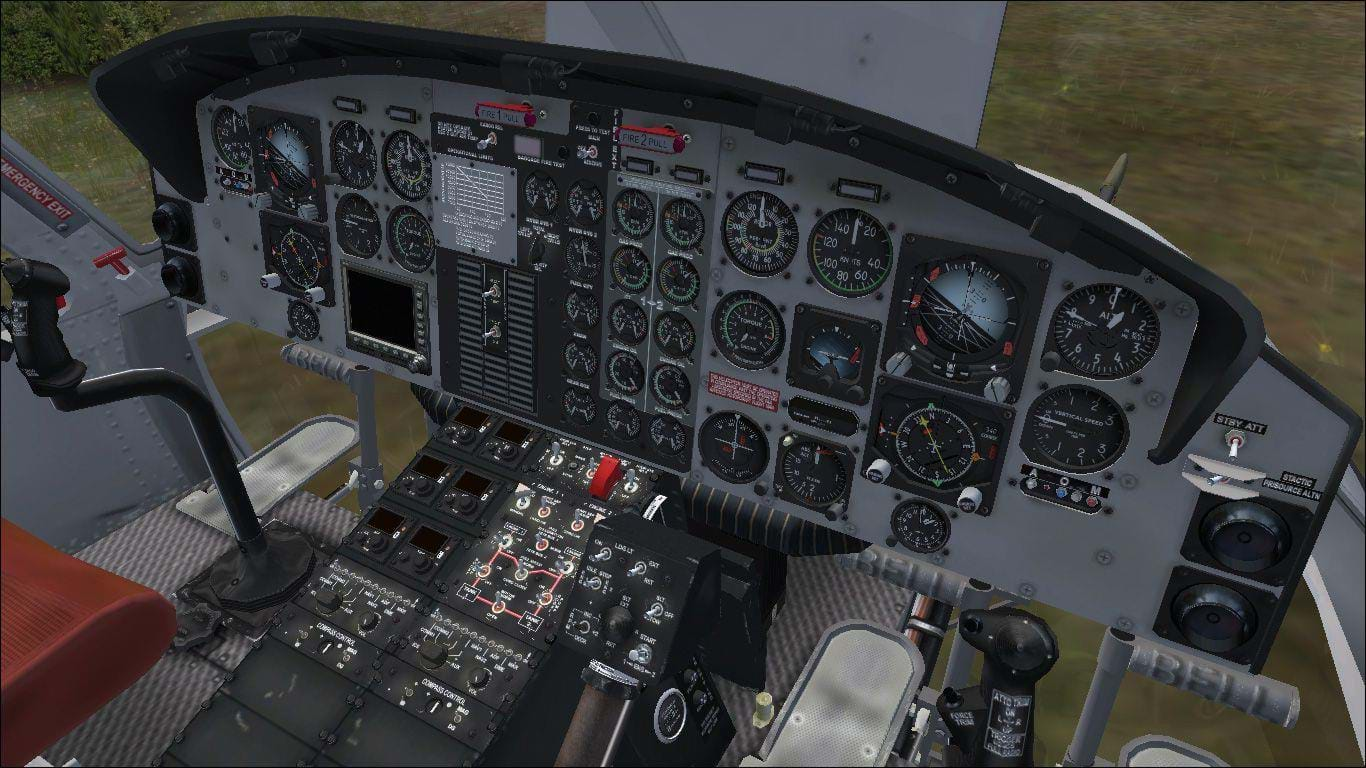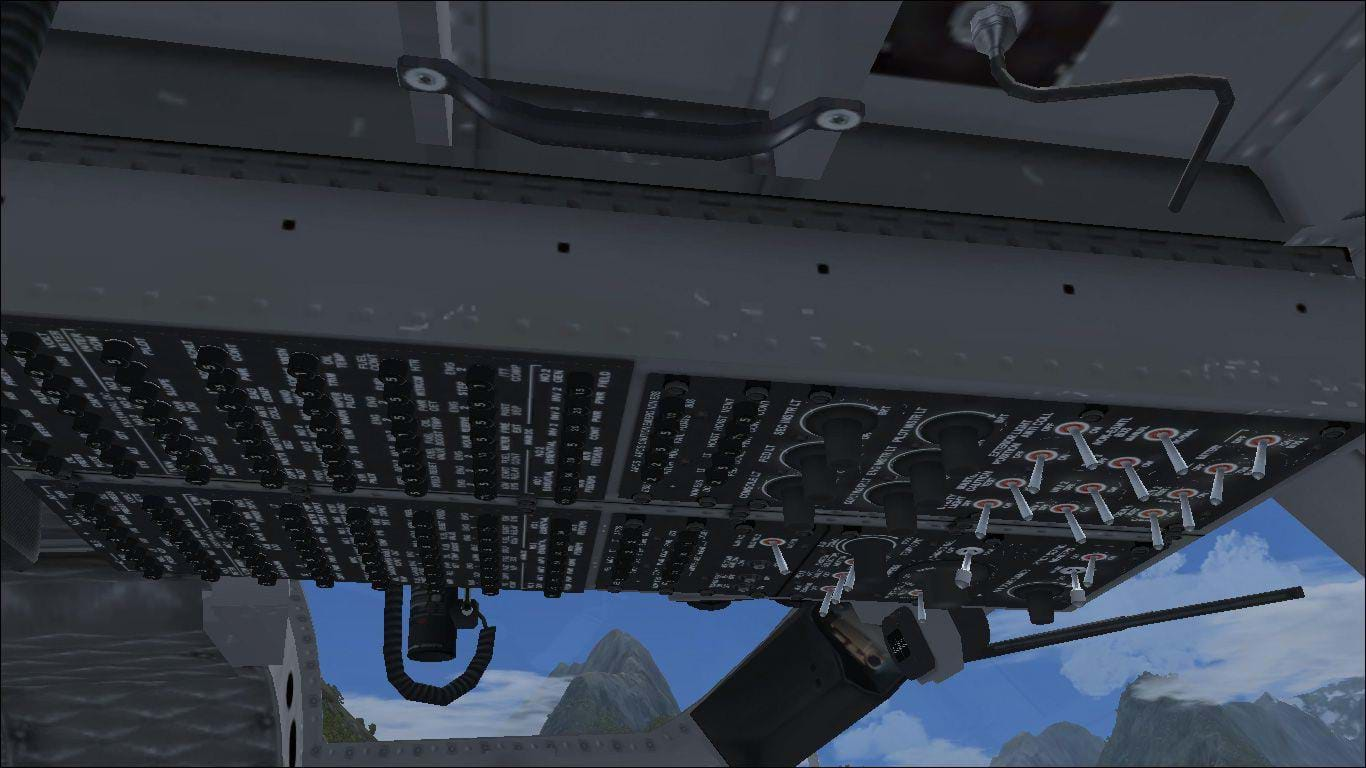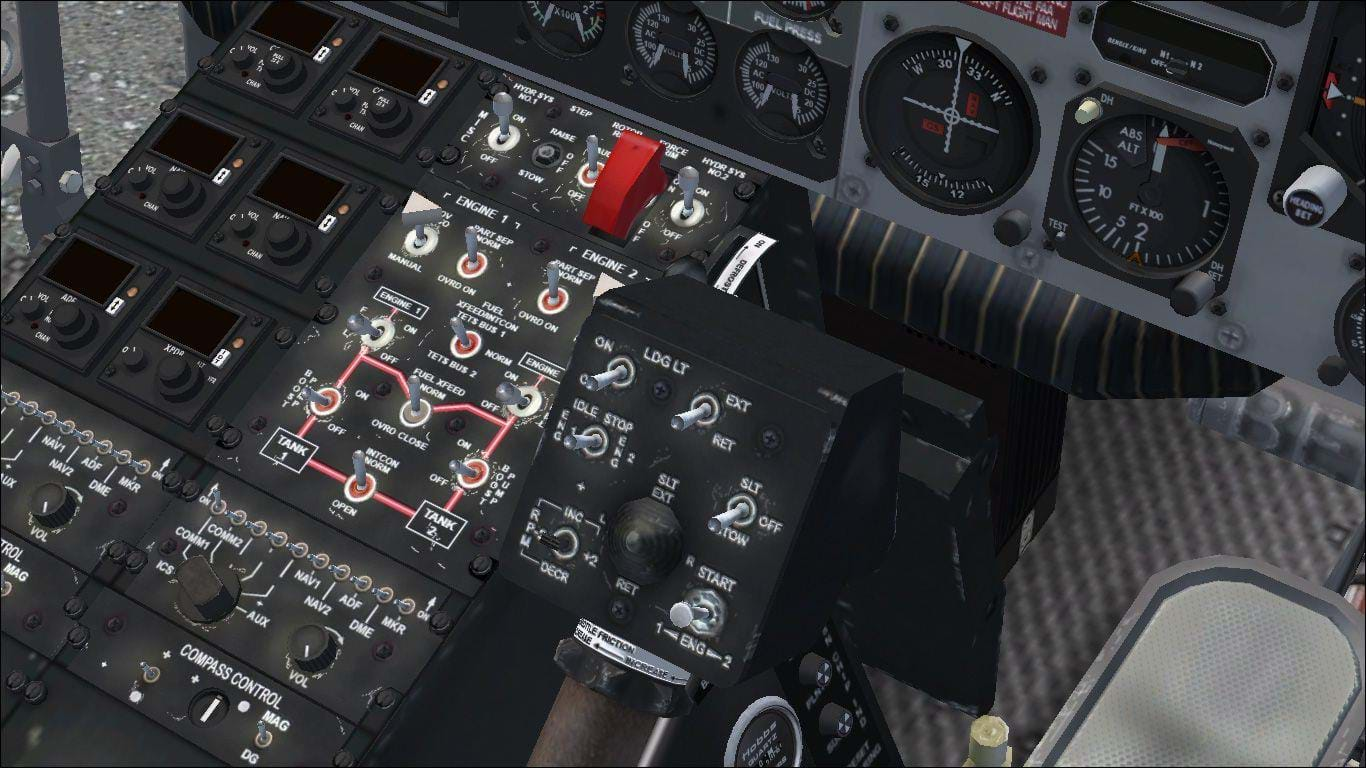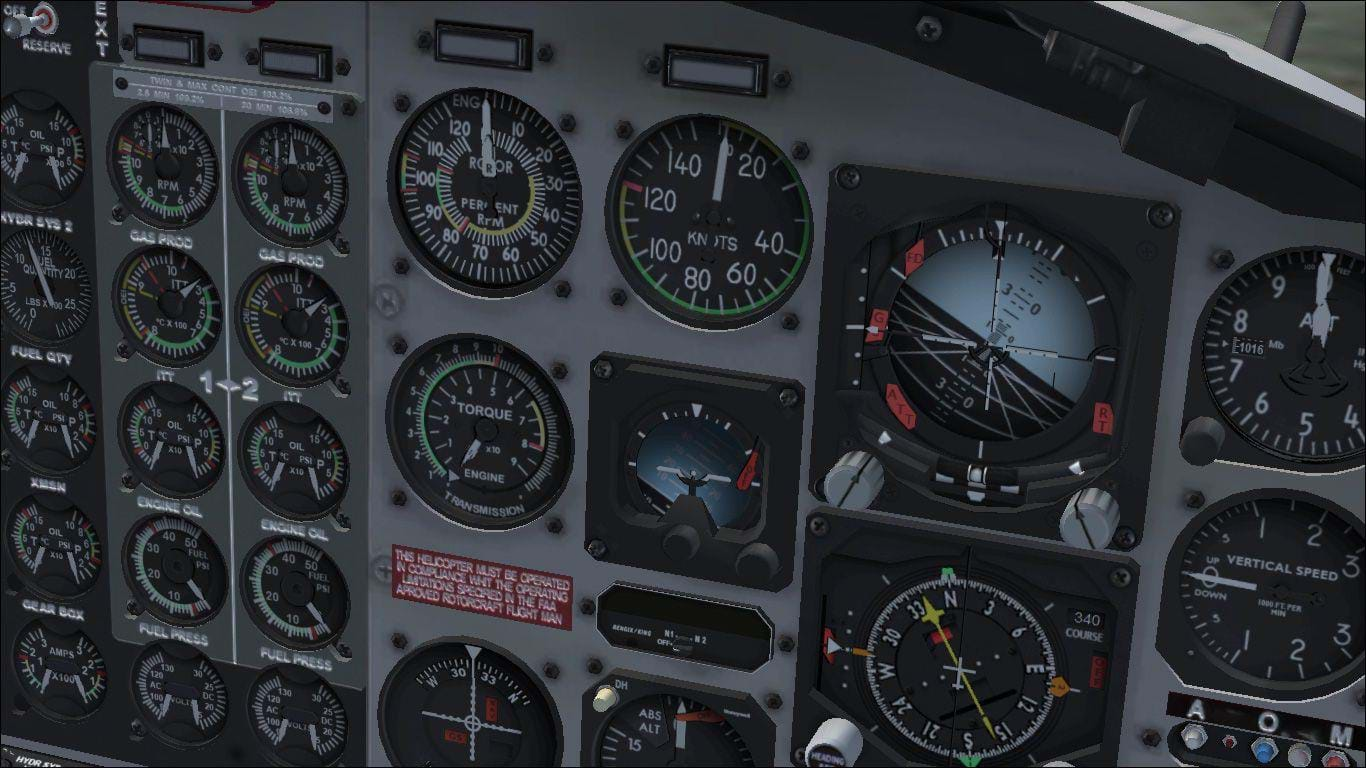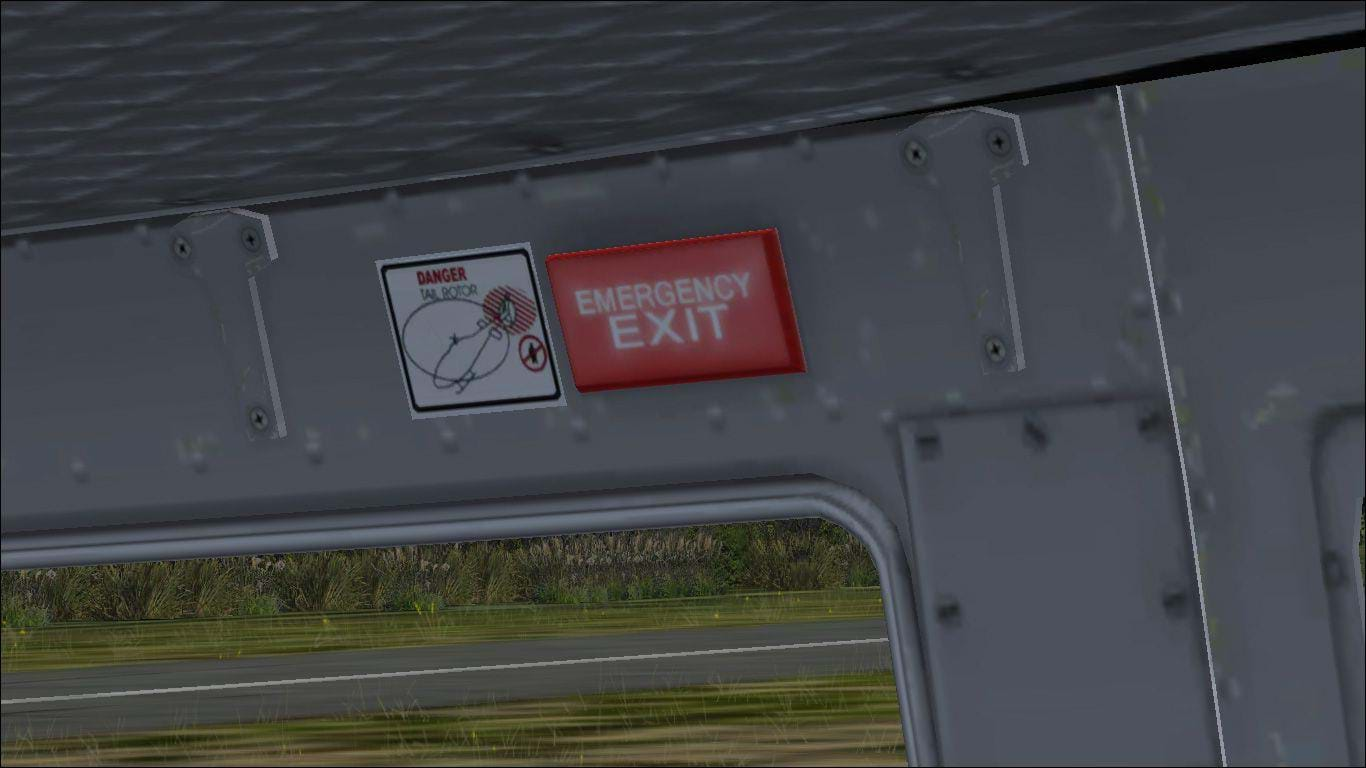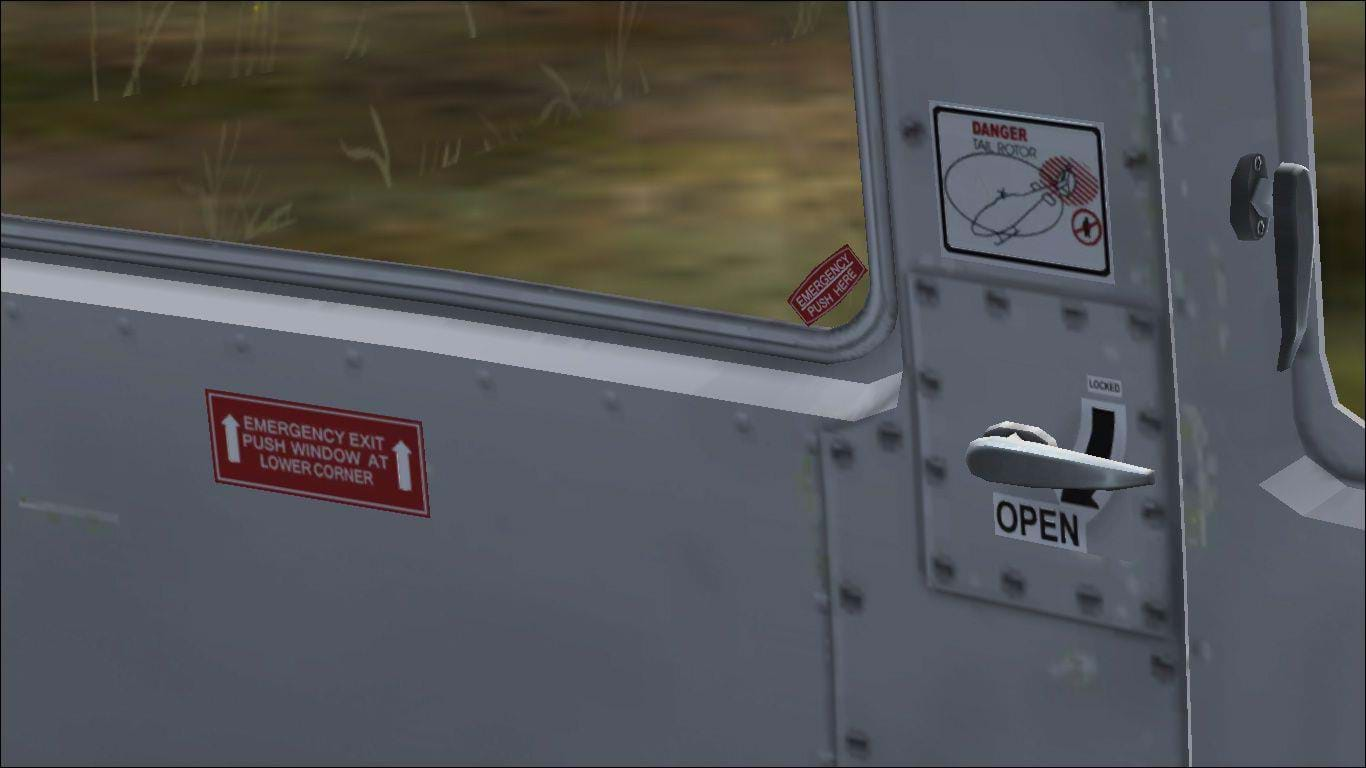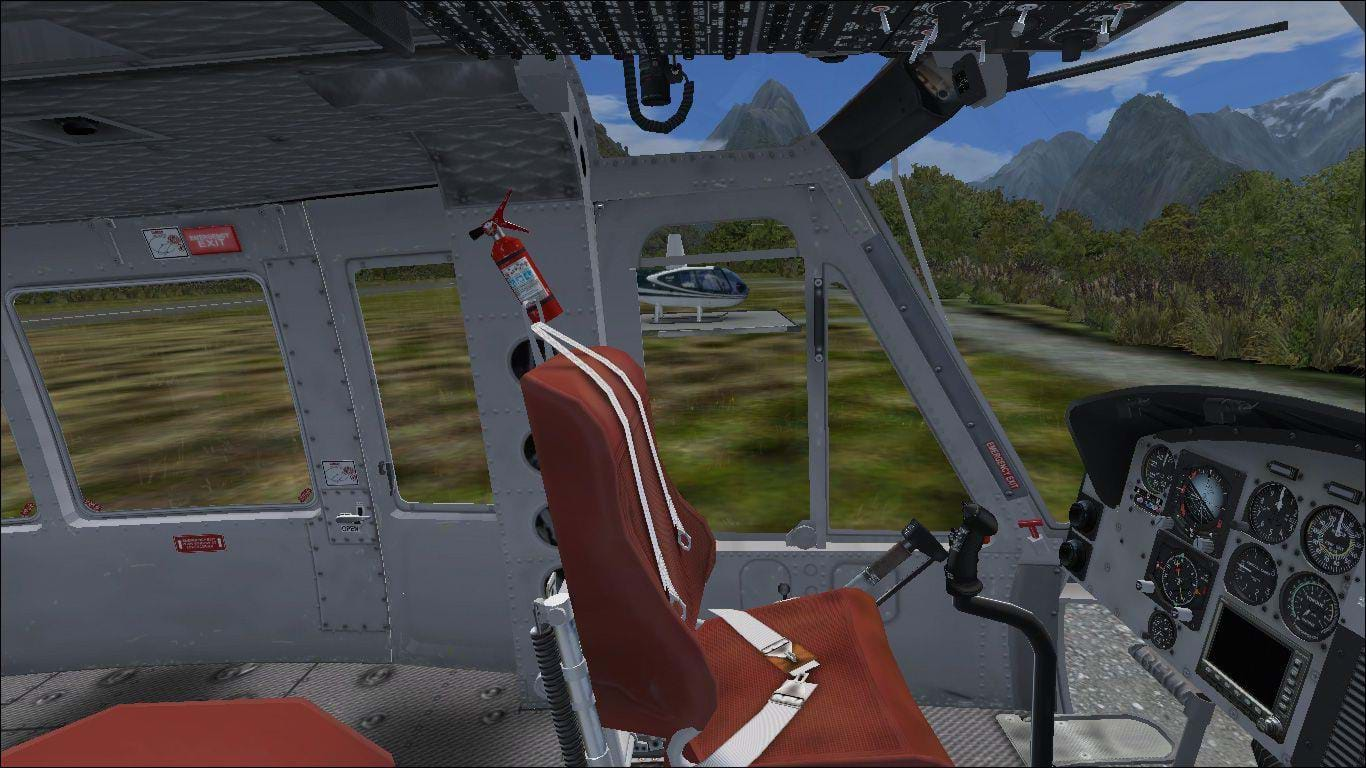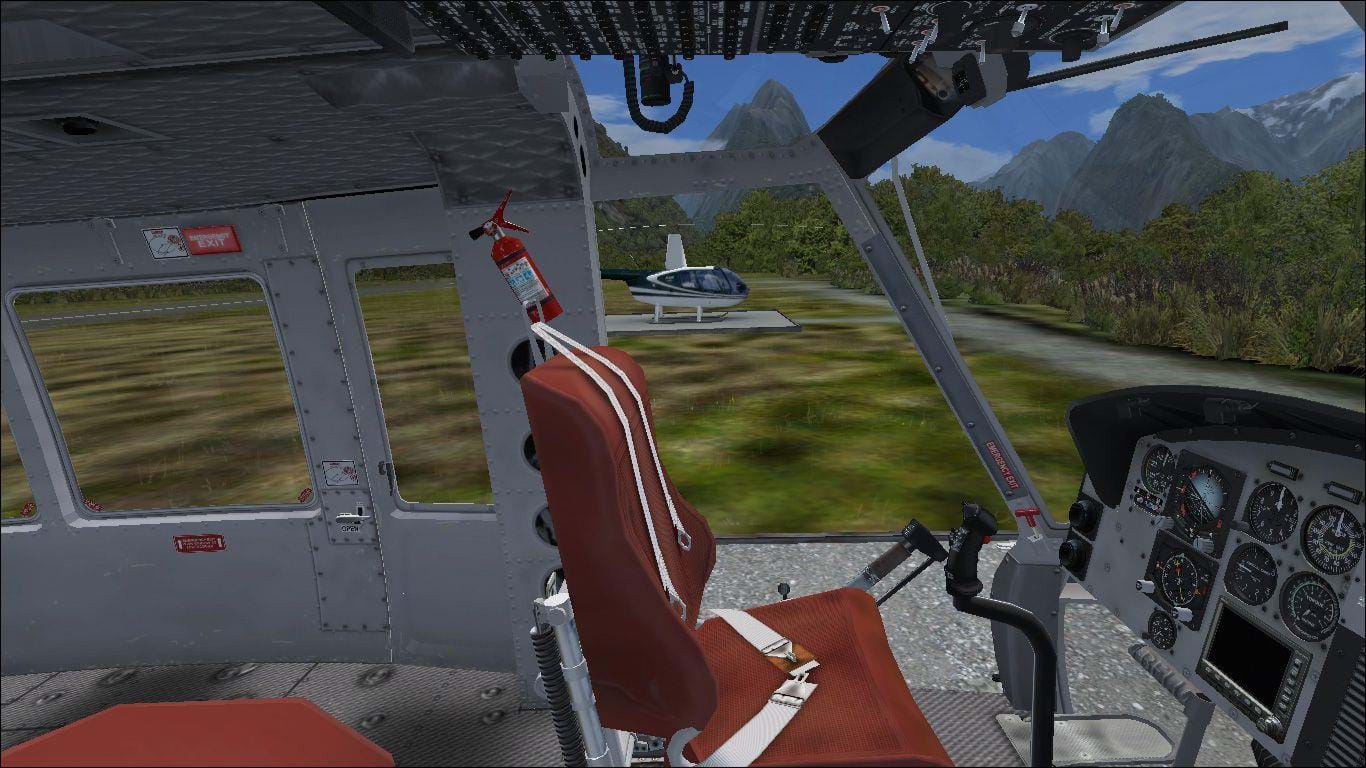Program History
By the mid-1960s, Bell Helicopter’s Model 205 and UH-1 were well established within the civilian and military world as reliable transport helicopters. Of course the UH-1 found fame in the Vietnam War as the aircraft that saved many lives of troops and civilians and became the most recognisable helicopter in the world. In the mid-60s, with the war in Southeast Asia still raging and getting bigger, the Canadian government contracted Bell to develop a twin engine aircraft based on the stretched Bell 205 airframe. Designated the CUH-1N, the ‘Twin Huey’ first flew in 1968 and the Canadian Government ordered 50 airframes. Later the CUH-1N designation was replaced with the CH-135 to better reflect the Canadian system.
Due in part to the Canadian orders, the PT6 built by Pratt and Whitney was chosen as the power plant. With each engine capable of producing 900shp and having two of them running into a common transmission (known as the ‘Twin-Pac’), the total power available amounted to 1800shp (The single engine Iroquois’ T53 produced 1100shp) Interestingly, an increase of 700shp on what is essentially the same airframe didn’t produce as much of a performance increase as one might expect. The new airframe was 1200lbs heavier than the old UH1 and the MAUW was increased 1700lbs to 11,200lbs. Of course, given the twin engine configuration, fuel consumption increased but the fuel capacity didn’t get increased, remaining at 814 LTRS (215 USG). As a result, the range of the twin engine aircraft was reduced over the single.
As was typical of Bell, a civilian version was developed in parallel and in 1971 when the Canadians received their first 50 airframes, the Bell 212 became available for purchase. The new aircraft found immediate use in the offshore oil industry where OEI (One Engine Inoperative) performance is more of a concern than speed and to a certain extent, range.
Interestingly, the US military weren’t quite so enthusiastic about the new design. This came about due to the choice of power plant being of Canadian origin. The Canadian government had been less than supportive of the US’ war in Southeast Asia. With US troops in battle in Cambodia and Vietnam and the CIA not so secretly involved in Laos, the use of a Canadian engine wasn’t politically appealing to the US government. However, after a source for the engines was found within the US, the Government ordered nearly 300 airframes for the Army, Air Force and Marines designated as the UH-1N.
Early in the civilian life of the 212, an IFR ‘kit’ was approved for use. An interesting feature of this kit is a large fin that was required to be fitted to the roof of the aircraft, ostensibly, to reduce the turn performance while flying IFR manoeuvres. One of the things I remember about my childhood, is Helicopters New Zealand (HNZ) using IFR equipped 212s to fly to the Maui Gas Platforms off the West coast of New Zealand. For some reason, the huge fin sticking out of the roof has stuck in my mind.
The aircraft, like other Bell types was built under license by Augusta for the Italian military and civilian market.
Today, the USMC and USN have retired their UH-1Ns although the Navy have partially recycled airframes into their UH-1Y program. The US Air Force have, through a modernisation program, updated their UH-1Ns and have acquired ex USMC airframes.
In the civilian world, the Bell 212 continues to soldier on alongside the Bell 412 which was designed to replace it. Many are now used in the fire fighting and logging roles as well as being popular in paramilitary roles with various government agencies around the world. With various conversion kits available now days, I think the Bell 212 will be flying for a few years yet.
Cera Sim Bell 212
Cera Sim have been around since the days of FS9 producing helicopters and only helicopters. Their stable isn’t big, but this, in theory, allows them to produce quality. My only experience with their add-ons was their Bell 412 back in the old FS9 days. Their Bell 212 appears to be a ‘straight out of the factory’ model, with no true military variants. This model was created back in 2010 so it might not look as good as a more recent release. FS add-ons should be more than screenshot queens though and we should be far more interested in how it represents flight in the Bell 212. I have not flown a 212 or any other medium types yet and so my basis for this review is going to be basic aerodynamics and research.
Download and Installation
The model comes in an .exe file that is 120mb in size. Upon running the file, you need to input the serial code that you get during the purchase process. Cera’s website stipulates that the model only works with FSX SP2 however, I’m running Steam and I haven’t had any issues. I would imagine that there might be some problems with P3D though. The unpacked files come to a modest 214mb so it’s hardly a big add-on. Within the sim you get six real world liveries on the same model.
Model and Textures
At first glance the model looks pretty good… and accurate.
The aircraft is equipped with wire cutters, standard tail (more on this later) and weather radar in the nose. One of the interesting choices by the developer is to not include a hook.
One of the best features of the model is the animation panel. SHIFT + 1 brings it up as in the photo above and enables you to open all but the pilot door, the cowlings, engine covers, nose hatch and plug the GPU in. You can even remove the seats out of the back. Given all of this, particularly the parked animations, it’s a little disappointing that you can’t remove the pilot figures. The flags and blanks look really good and they have a generic movement to simulate them ‘blowing’ in the breeze
While the modelling is pretty terrific, the textures are starting to look a little bit dated. Nothing too bad, just a few jagged edges and rivets that look a little too prominent. The blade animation, particularly when viewed from below looks a bit odd. You only really notice it when paused though.
I’m really struggling to find anything wrong with the model. About the best I can do is the rotor animation. When shut down, the collective moves the swashplates and blades as it should, however the cyclic ‘teeters’ the blades and the stabiliser bar without moving any of the pitch links. In real life, moving the cyclic while the blades are stationary only changes the pitch on the blades. The blades UH-1 series and in fact, any two bladed helicopter, teeter in the wind and as a result need to be tied down to avoid the rotor head getting knocked around by the blades teetering. The stationary blades also should droop a little however on the model they appear to ‘cone’ as they would in flight. It’s not too bad though.
The tail rotor gearbox and blade animation is pretty good. There are a lot of little linkages present and they all move. The only thing I’m not sure about is how much movement. I would have thought that everything would have moved more. The pics below demonstrate full left and right travel on the pedals.
Cera have made an executive decision on the tail. A lot of aircraft now days have the ‘FastFin’ modification. This changes the fin and ads ‘strakes’ to the tail boom to make the tail rotor and boom more efficient (see below). This mod is becoming increasingly common but in all fairness, the aircraft Cera have depicted still have the standard tail.
With the engine cowlings open, the engines and air intakes are visible. Unfortunately, the modelling is a little ‘blocky’ but the textures appear to be a nice photo real. Given the age of the model, it’s a really nice touch.
With the transmission cowling open, you can look right down onto the base of the trans. It looks really good with all of the pitch links modelled and the gearbox itself looks wonderful.
Even the boot in the tail boom opens and has the pilot’s helmet bags and assorted boxes that would probably contain oil and the like.
The nose cowling houses the batteries which are well modelled and textured and the GPU is modelled when selected. The only criticism and it’s a minor one is that the little flap that protects the ground power receptacle isn’t modelled.
The interior speaks for itself.
It is a fairly typical representation of a right hand drive, IFR equipped 212. The panels look realistic and have just enough wear and tear on them to make them believable. The modelling is crisp and clean with just a few jagged edges up close. The texturing suffers a little up close the same as the exterior and this shows up on the labelling for the instruments. Overall though, it’s a very good effort.
I mentioned before that the aircraft has a weather radar fitted in the nose. On the Cera panel, the GPS occupies the space usually occupied by the radar scope. This isn’t incorrect but I don’t think anyone would put a GPS in such an inconvenient place. If an aircraft had the IFR equipment taken out, the radome would probably be left in place and the radar scope probably would’ve been taken out. Not a big deal but it’s worth noting.
The rear cabin doesn’t have a lot of detail to model but the detail that is there is pretty sharp.
One of the things about the interior modelling though is that you can’t open any of the doors from the inside with mouse clicks. The pilot’s door is opened by the SHIFT + E combination and the other doors require the animation panel to operate. Cera have done something here that I really wish more developers would do. Helicopters by nature are used in a utility role and quite often fly without doors. Most developers don’t even bother trying to cover this aspect of helicopter operations. Cera have executed the best solution to this that I have seen. Pulling the door release…. does exactly that. Best idea ever.
Overall, given the age of the model, it holds up very well. It is, to the best of my observations, extremely accurate with the exception of the main rotor animation but this is only noticeable when the aircraft is shut down. The animation panel is a great idea which needs to be adopted by more developers. The textures are starting to look a little dated inside and out but are still perfectly adequate. A pretty good effort all round.
Systems
The Bell 212 is probably one of the most complex helicopters I have operated in the sim. However, once the systems are understood, the aircraft is easily operated. As I said before, I don’t have any experience with the real aircraft and I can’t find a RFM for reference so this will be based on videos of the real thing being operated.
The aircraft has a dual battery system and on the model, bringing up either battery lights up the electrical system. The generator selectors on the real aircraft are three position switches which can be Reset, Off and On. On the real aircraft, the reset function is spring loaded but on Cera’s model, the reset isn’t modelled at all. Not a big deal but it’s worth noting. AC power for the aircraft is provided by two inverters with an option for a third as a redundancy and the model has these modelled about as accurately as they could be.
The external lighting controls are fairly simple with just position and beacon light controls with a landing light control on the head of the collective. The interior light rheostats, like a lot of add-ons are all linked. In addition, there is a dome light control, pitot heater, window wiper controls that all work as they should. The heater and air controls move but don’t have any effect on the ITT of the engines. The large numbers of circuit breakers are modelled but none of them move.
Usually when you are operating an aircraft all the time, you use an abbreviated start procedure. First off, both battery switches on, inverters on, caution and warning lights push to test, fuel check on the three position switch. Run both throttles all the way up to flight and then back to idle, actuate the idle release switches and roll the throttles back to the cut off. Next, check the static readings of the engine instruments and you’re ready to start the first engine. On the centre console, there is a fuel control panel. Up until now, the fuel supply to the pumps has been shut off so for the appropriate engine, usually number one, the fuel boost pump goes on first followed by the fuel valve.
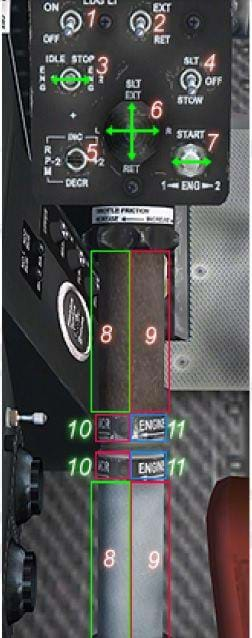 The engine start switches are located on the head of the collective. The starter is a three position caged switch. Moving the switch to the left actuates the number one starter and like most other turbines you watch the gas producer or N1. On the PT6, you are looking for 10% at which point you inject fuel by opening the throttle. One of the quirks appears to be that you have to open the throttle all the way and then back to idle. As N1 passes 55% you move the start switch back to the middle position and allow N1 to stabilise. The generator for the appropriate engine goes on at this point and then the throttle is advanced to around 70%. I’m not sure of the reason for this but usually it is to bring the generator online. The same procedure is repeated for the second engine. As the second generator comes on line, the left battery pops offline. The only thing left to do is bring up the throttles to flight. There are two separate throttles and it appears that most people bring them up together.
The engine start switches are located on the head of the collective. The starter is a three position caged switch. Moving the switch to the left actuates the number one starter and like most other turbines you watch the gas producer or N1. On the PT6, you are looking for 10% at which point you inject fuel by opening the throttle. One of the quirks appears to be that you have to open the throttle all the way and then back to idle. As N1 passes 55% you move the start switch back to the middle position and allow N1 to stabilise. The generator for the appropriate engine goes on at this point and then the throttle is advanced to around 70%. I’m not sure of the reason for this but usually it is to bring the generator online. The same procedure is repeated for the second engine. As the second generator comes on line, the left battery pops offline. The only thing left to do is bring up the throttles to flight. There are two separate throttles and it appears that most people bring them up together.
Cera’s 212 operates almost exactly the same as the real thing. There are a couple of things to note though. The idle release on the sim is a little awkward to use. I have had issues with accidentally rolling the throttle back into the cut off after light off. I’m not sure if it can be mapped to a flight stick button or not but that would make life a lot easier. The throttle click spots are a bit awkward too. The pic below shows the pic out of the manual. The trouble is that from the pilot’s seat, the click spot for opening the throttle incrementally (labelled 8 on the pic) can be quite hard to find when the throttle is open above about 50%.
As is quite often the case, the blades get up to idle too quickly although the other engine parameters rise at about the right rate. Once the engines are at idle, and the needles are superimposed, the rotor RPM hunts around a little just like the real thing.
All of the switches illuminate the appropriate warning lights on the panel although many of the more complex systems aren’t actually modelled. The dual hydraulic system is only modelled to the point that the switches activate the hydraulic warning lights. In all fairness the only developer I have seen that has been able to model hydraulics off flight is Dodosim and we all know that they are on a different level. On the plus side, having the hydraulics off does register a drop in hydraulic pressure. The governor and particle separators also activate warning lights but don’t seem to have any effect on engine operation. The N2 beeper works well and sometimes it is necessary to use it to bring the RPM back into the green range. If the RPM ends up too high, the RPM warning light activates. In addition, having different throttle settings for different engines produces a torque split just as it should.
There isn’t anything special about shutting down this machine and procedure can be replicated pretty well with the sim. One thing to note though is that after shutdown, the blades slow at about the correct rate to start with but then slow much quicker as the RPM gets lower. There is no rotor brake modelled and not all Bell 212s have one fitted.
Overall, Cera have made a pretty good effort given the complexity of the real aircraft. The start-up procedure can be almost exactly replicated in the sim. The RPM and temperature values seem to match the real aircraft. The click spots for the throttles are a little awkward but once you figure them out they’re easy enough. None of the more complex engine systems seem to have any effect which is a little disappointing but at least when actuating these systems, you get the appropriate response in warning lights and gauges.
Sound
From the inside, the only door animation that has any sound attached to it is the pilot’s door and it is a pretty generic sound. Unfortunately, none of the other doors have any sound. On that note, I can’t find anything on the interior that has a sound file attached to it. It’s really disappointing given the attention to detail on the interior. Switching either battery on or connecting the GPU, you can hear the electrics come to life in the form of what sounds like cooling fans. The sound winds up and plays at a constant level. If you leave it for a length of time though the sound winds down again and the process repeats. Switching off the battery just terminates the sounds with no wind down or anything. Switching on in inverters doesn’t produce a change in the noise as it should give that the gyros are powered off the inverters. The other thing that isn’t present is any sort of Low RPM horn. There is a switch to mute the horn but I haven’t seen anything that tells when it is activated or what it sounds like.
The boost pump makes just a very slight sound which, from my observations is pretty accurate. It’s strange that this slight sound was included and yet there are no switch sounds at all. The start-up sounds are pretty good and they certainly sound like PT6s. When the engines are up and running, the sounds are actually very convincing. This is one of the few add-ons that have managed to get the interior sound of a helicopter more or less correct. The transmission whine overpowers almost everything else, just like the real thing. The blending of the sound from the start to ground idle is OK but it isn’t perfect. When starting the second engine, the sound is dulled a little by the noise that is already present and this seems about right. The start-up is difficult to accomplish from the exterior view but the sounds are different and they sound pretty realistic.
The tail rotor buzz is lost in the interior sounds and is only just noticeable in the exterior sounds. I think it should be just a little bit more pronounced in the exterior view although in real life, it’d depend on where you’re standing in relation to the aircraft. The sound pack, while it really sounds right, doesn’t have any sound cones and I think back when this was released, not many sound packs did.
The typical sound of the Bell 205 / 212 rotor system that everybody knows is bang on and the subtle differences are just enough to let you know you’re flying a twin engine machine. There is no blade slap sound in flight unfortunately but again, not many add-ons from this period did.
The sound files for shutdown certainly sound like PT-6 engines shutting down and my only criticism is that the sound files are too pronounced above the sounds of the rotor systems. The sound of the blades spooling down doesn’t quite match the animations and the last part of the spool down as I said before is too quick.
Overall, the lack of cockpit sounds is very disappointing but the sounds of the aircraft while the blades are turning are very good. The transmission whine really sells the experience for me. Some slight synchronisation and volume issues but still a very realistic representation.
Flight Dynamics
Bell’s 205 rotor head that was used on the 212 is well known to produce a remarkably stable aircraft. The design that goes back to the famous Bell 47 uses a stabiliser bar to dampen out forces on the disc. Two bladed aircraft are generally regarded as being less stable than multi bladed machines however; the stabiliser bar system and the overall weight of the aircraft make the UH-1 series of aircraft suitable for utility type work.
Picking Cera’s 212 up off the pad, one certainly has the impression that this is a stable aircraft. Just a touch of left pedal is required to keep it straight and a glance at the dual torque gauge highlights an interesting characteristic. Even when empty, the aircraft seems to use a lot of power to get off the ground. A view of various videos shows this to be fairly accurate although when operating at MAUW, you are pretty much pulling into the transient limits (Around 95% Torque).
The aircraft seems to be a little sluggish in the hover particularly about the pitch axis. Control effectiveness combined with the fact that your visibility around the panel is rather poor if you’re not using TrackIR makes the aircraft a little tricky to hold in a hover over one spot. It isn’t that difficult but it does require a little bit of practise. Heading through translation is a complete non-event but once in forward flight, the fin doesn’t really do anything like it should. One has to hold left pedal in through all powered flight regimes. Thankfully the amount of left pedal isn’t a lot and so I’m quite happy to accept the aircraft flying half a ball out of balance. On the same note, the pedal sensitivity seems to be greater than other aircraft. It’s quite difficult to hold a constant pedal setting and so if you aren’t perfectly still the aircraft has a tendency to fishtail about the normal axis. It isn’t terrible but it is noticeable.
Cera have balanced the aircraft rather well so even if you are using a springy flight stick, you don’t have to hold the stick forward too much to maintain attitude. The aircraft gets up to a reasonable cruise of 100kts with no worries but if you’re pulling a lot of power, it is quite easy to get up to VNE. In the real aircraft, getting close to VNE produces so much vibration that you wouldn’t want to get too close to it. The aircraft handles well and definitely gives a feeling of flying a medium.
When flying a twin, one of the biggest considerations is the OEI performance. The Cat A (See above) performance numbers for the 212 are reported at 10000lbs for the above profile and a mere 8600lbs for a vertical departure. At 10000lbs I am unable to perform a Cat A departure. It gets off the ground alright but you’re pulling a lot of power to get moving and there’s no way you can climb to 140ft at a slow speed. Drop the weight to 8600lbs, and you can go vertical no problem. In short, Cera’s 212 doesn’t quite have the power it should have.
The UH-1 series is well known as being incredibly stable in autorotation. The 212 is heavier than the 205 but it should still have a very favourable profile in the glide. Retarding both throttles from 1000ft, the first thing I noticed was that the RRPM went straight to the top of the range. No problem, just raise the collective to bring the RPM down except that it doesn’t work. If you keep raising the collective, the aircraft will fly level. I flew a whole circuit in autorotation from 1000ft! The usual bug with zero speed autorotations is present so the classic UH-1 profile isn’t possible. If you ignore the bugs, then a perfectly adequate auto is possible but the RPM is going to up at the top of the range.
Overall, it’s a pretty good effort given the age of the add-on. The aircraft is easy to fly without proper flight controls and almost flies itself in the cruise. As a work platform, the aircraft is stable however the flight controls are a little bit doughy in the pitch axis and it can be a little tricky to hold a stable hover. The ineffectiveness of the vertical stabiliser in forward flight and the unusually sensitive pedals are minor annoyances. The strange behaviour in autorotation only shows up, naturally, when in autorotation so you aren’t going to notice it day to day.
Miscelaneous
Documentation
The add-on comes with a 24 page PDF document that is surprisingly informative and is complete with a very well structured and written cockpit orientation. Interestingly there are no emergency procedures or anything about single engine performance. It would have been nice for them Cera to include some data for those of us wishing to simulate proper IFR type operations.
Where to get it
You can get it here: http://secure.simmarket.com/cera-bell-212-fsx-sp2.phtml

